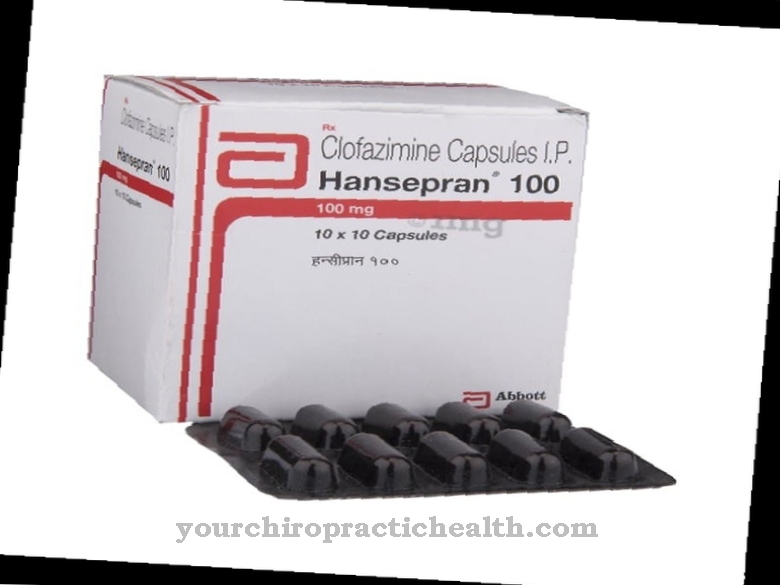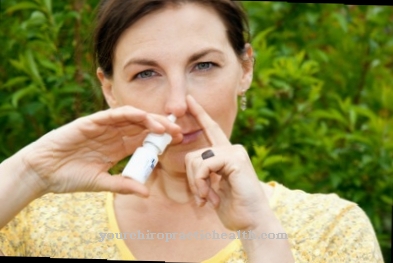Arsphenamine is an organic arsenic compound that was marketed under the trade name Salvarsan. The drug was used to treat the infectious disease syphilis. Administration was usually intravenous or intramuscular. The substance often caused severe side effects.
What is arsphenamine?

Arsphenamine, also known as dioxydiamidoarsenobenzene, was discovered in 1907 by the German doctor and researcher Paul Ehrlich. It was the first effective chemotherapy agent to enter the drug market. The drug replaced the highly toxic mercury compounds in the treatment of syphilis at the beginning of the 20th century.
Thousands of people still suffer from this infectious disease, which is transmitted by the pathogen Treponema pallidum. Arsphenamine reacts with oxygen to form toxic compounds. Therefore, the substance had to be marketed in airtight ampoules. Despite its high effectiveness, arsphenamine caused unpleasant and in some cases even very dangerous side effects.
Pharmacological effect
For centuries mankind suffered from the causative agent of syphilis. With the discovery of arsphenamine, it was possible to treat the disease for the first time. With this synthetic arsenic compound, its discoverer Ehrlich, after numerous unsuccessful attempts, developed a drug that specifically attacks the bacterial cells. However, the substance has no negative effects on human cells.
With the administration of arsphenamine, the energy metabolism of the pathogens is significantly disrupted. One injection is often enough to weaken or even destroy the bacteria. A major disadvantage of the preparation is its poor solubility and the strongly acidic reaction with distilled water. The acidic solution is not suitable for therapy, so it has to be mixed with caustic soda. The end product of this mixture is an alkaline liquid that can be used for therapeutic purposes.
The addition of sodium hydroxide solution often caused burns of muscle tissue and damage to veins after intramuscular or intravenous injections of the preparation. Therefore, successor substances such as Neosalvarsan have been developed, which are much better tolerated than Salvarsan. Despite the lower arsenic content, they have a very good effect. The World Health Organization estimates that several million people are still infected with the sexually transmitted disease syphilis every year. Penicillin is now used successfully to treat the disease because, unlike arsphenamine, it hardly causes any side effects.
Medical application & use
Arsphenamine was primarily used to treat the sexually transmitted disease syphilis, but is also used as a medication for other infectious diseases. As a rule, the preparation enriched with sodium hydroxide solution was injected into the veins or into a skeletal muscle using a syringe. The healing effect of the substance sometimes started after the first injection. As a rule, however, the injections were repeated three to four times with breaks of several days or weeks in between in order to avoid relapses of the disease.
Arsphenamine has a damaging effect on the cells of the pathogen and hinders its vital metabolic activities. Due to the toxic effect of this synthetic arsenic compound when it reacts with oxygen, it is transported in airtight containers. There, the basic substance can be kept for a long time, but must be used immediately after the injection solution has been completed. The intravenous injection ensures a quick effect, while the intramuscular administration gives a longer lasting effect.
Risks & side effects
The drug arsphenamine had to give way to penicillin in the treatment of syphilis, as it has severe side effects. Shock reactions such as severe restlessness or reddening of the face and neck, constriction in the chest area, drowsiness or shortness of breath can occur just a few minutes after the injection solution has been administered. Dangerous cerebral haemorrhages and pulmonary edema cannot be ruled out either. By diluting the substance and slowly injecting it, it is possible to reduce the side effects to a limited extent.
Toxic reactions of the organism such as chills, fever, vomiting, body aches or acute failure of kidney functions can occur several hours after the administration of arsphenamine. Diseases of the gastrointestinal tract often occur. Side effects such as heart and vascular diseases, blindness, deafness, paralysis and metabolic diseases are also known. The long-term effects that can occur even weeks later include diseases of the blood, liver and skin as well as damage to the central nervous system.
























.jpg)



